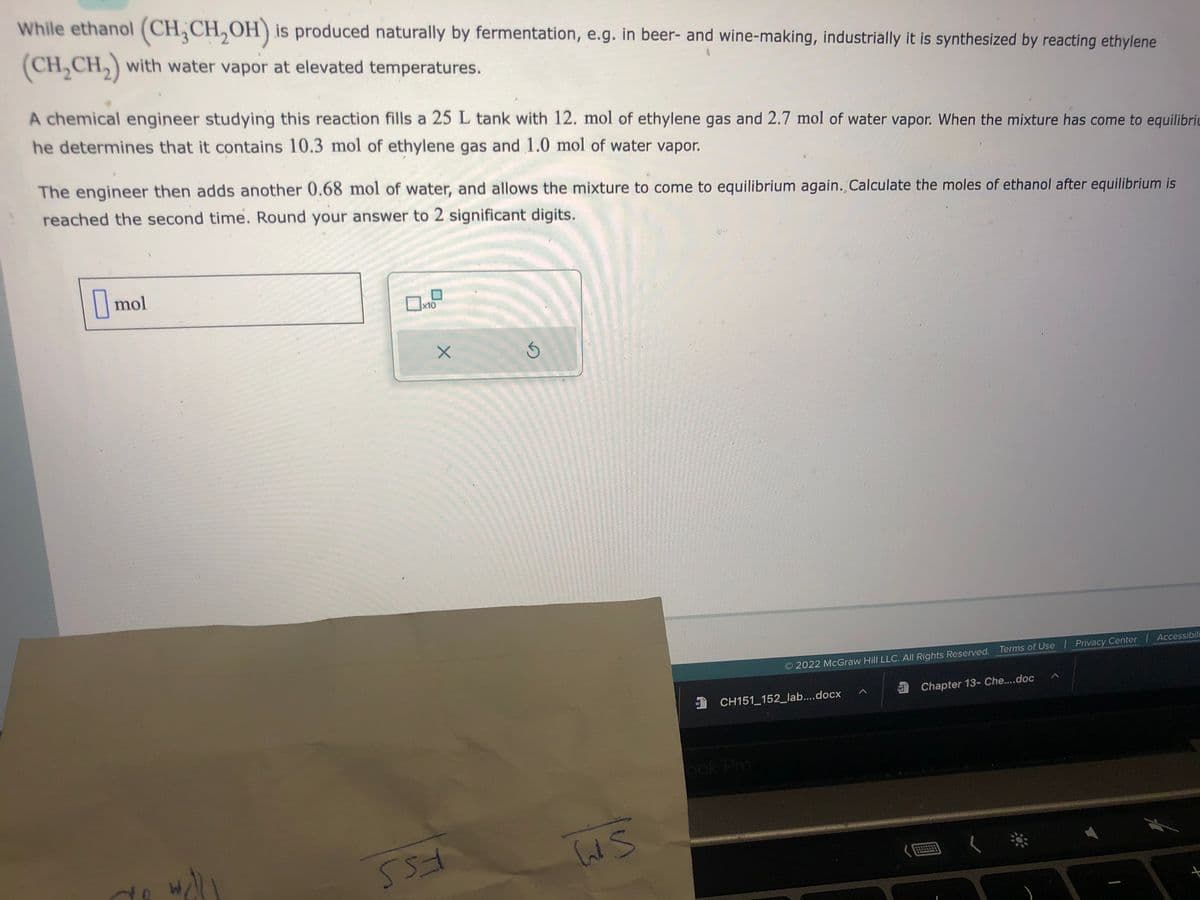While ethanol (CH₂CH₂OH) is produced naturally by fermentation, e.g. in beer- and wine-making, industrially it is synthesized by reacting ethylene (CH₂CH₂) with water vapor at elevated temperatures. A chemical engineer studying this reaction fills a 25 L tank with 12. mol of ethylene gas and 2.7 mol of water vapor. When the mixture has come to equilibr he determines that it contains 10.3 mol of ethylene gas and 1.0 mol of water vapor. The engineer then adds another 0.68 mol of water, and allows the mixture to come to equilibrium again., Calculate the moles of ethanol after equilibrium is reached the second time. Round your answer to 2 significant digits. mol X
Thermochemistry
Thermochemistry can be considered as a branch of thermodynamics that deals with the connections between warmth, work, and various types of energy, formed because of different synthetic and actual cycles. Thermochemistry describes the energy changes that occur as a result of reactions or chemical changes in a substance.
Exergonic Reaction
The term exergonic is derived from the Greek word in which ‘ergon’ means work and exergonic means ‘work outside’. Exergonic reactions releases work energy. Exergonic reactions are different from exothermic reactions, the one that releases only heat energy during the course of the reaction. So, exothermic reaction is one type of exergonic reaction. Exergonic reaction releases work energy in different forms like heat, light or sound. For example, a glow stick releases light making that an exergonic reaction and not an exothermic reaction since no heat is released. Even endothermic reactions at very high temperature are exergonic.

Trending now
This is a popular solution!
Step by step
Solved in 2 steps with 3 images









